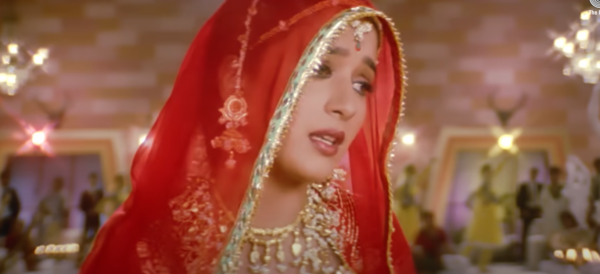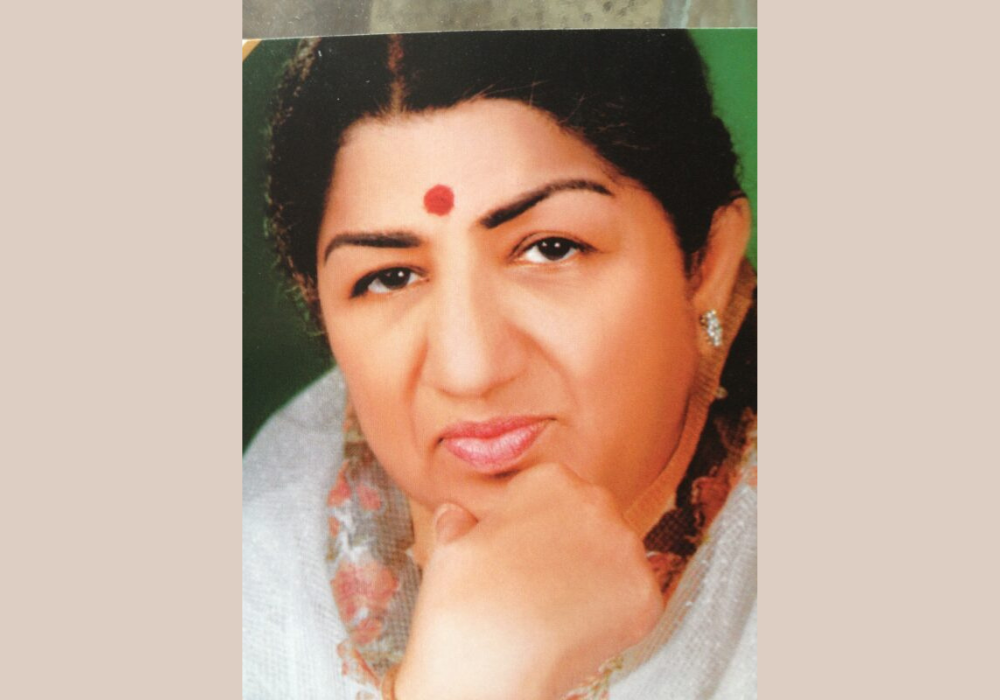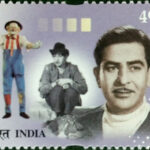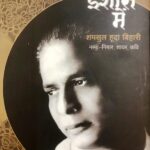While reams have been filed on Bharat Ratna Lata Mangeshkar’s works with composers like Shankar-Jaikishan, Madan Mohan, Naushad, Salil Chowdhury and others, there is precious little on the truly voluminous work done by the legend (whose death anniversary falls on February 6) with Laxmikant-Pyarelal
But as per her chronicler, Harish Bhimani, her score of L-P songs—incidentally the highest any singer has sung for any composer—stands at an incredible 712 songs of the approximately 6500+ songs she has recorded in her career, including film and non-film, multiple languages and genres. That places L-P at recording even 9th song she has ever sung, all between 1963 and 1996, when she sang her last song for them in Prem Granth (Main kamjor aurat yeh meri kahani).
Looking at the recordings for L-P, her tally will probably add at least (conservatively) 30 more songs as they never came out because the films either never took off or were never completed.
But the Lata-L-P oeuvre was certainly not about just quantity. It was essentially about quality and also variety. And this is the reason why ignoring Lata’s association with them is almost criminal!!

For L-P, Lata had no restrictions as they understood her like no one else did. She sang cabarets (Aur mera naam hai Jameela / Night In London among the rare ones, Aa jaan-e-jaan / Inteqam among the cult), waltz (Shabnam ka yeh katra hai / Sharaara), other Western numbers (Aaja re piya khilne lage / Baharon Ki Manzil) and even a disco song (Naseeb’s title-song) for them.
And apart from routine happy or sad romantic numbers, there were folk songs (Ni main yaar manana ni / Daag), ghazal (Hamin kare koi soorat / Ek Nazar), qawwali (Allah yeh ada / Mere Humdum Mere Dost), mujra (Zamane mein aji aise / Jeevan Mrityu) and devotionals (Jyot se jyot / Sant Gyaneshwar).
Add children’s songs (Maine maa ko dekha hai / Mastana), classical beauties (Jaaon tore charan kamal par vaari / Sur-Sangam with Pt. Rajan-Sajan Misra) and lullabies (So jaa re so jaa so jaa re/ Shaadi Ke Baad) and there is virtually no genre untapped.
What’s more, the duo confessed that they could never see beyond Lata Mangeshkar, and would even shell out part of their own remuneration to afford her for their earlier small-budget films. “We did not want to compromise with the song by taking someone else!” they maintained. In turn, Lata would sometimes sing for them at a reduced price, and in the 1970s, it is said that she would block seven days of the month exclusively for L-P!
The range of actors for whom L-P used that iconic voice ranged from those playing elderly mothers (Nirupa Roy in Kranti, Achla Sachdev in L-P’s second Chhaila Babu in 1977) all the way to children, like masters Mahesh Kothare (Chhota Bhai), Sachin (Bachpan), Alankar (Majboor) and Bobby (Mastana).
Helen (Inteqam), Bindu (Buniyaad), Aruna Irani (Charas), Laxmi Chhaya (Mera Gaon Mera Desh) and Padma Khanna (Gaddaar) and more dancers apart, they filmed songs with her voice on everyone from Meena Kumari (Baharon Ki Manzil) and Nutan (Milan) to Madhuri Dixit (Ram Lakhan), Manisha Koirala (Saudagar) and Divya Bharati (Kshatriya)!
Under L-P, Lata not only went so-high solo but also collaborated very effectively most with Mohammed Rafi, Kishore Kumar, Mukesh and Asha Bhosle.
Here are some more salient points about their association.
In 1978, when Gulzar announced Meera, he opted for Laxmikant-Pyarelal, his friends from his struggling days who had scored his lyrics in Palkon Ki Chhaon Mein. But when Lata refused to sing as she was simultaneously recording a Meera album with brother Hridaynath Mangeshkar, L-P actually quit the film, which went to Pt. Ravi Shankar.

In the late 1990s, L-P recorded a multi-lingual song with Lata for R.K. Nayyar’s Sanjay Dutt-Madhuri Dixit starrer, Yeh Jo Mohabbat Hai, which had four antaras (inner verses) in Hindi, Marathi, Gujarati and Telugu. Sadly, the film was shelved and the song (for whose recording Laxmikant had invited me and I could not go because of a prior commitment) is lost. In 2010, actress Sadhana, Nayyar’s wife, admitted that she possessed the song, but on spool. With her demise, it is gone for good!
Another such gem was the muhurat (launch) song for Rajmata, launched in 1978, which would have been L-P’s first Hindi-Marathi bilingual. Starring Nutan, Sunil Dutt and Parikshat Sahni, the film was based on the life of Emperor Shivaji’s mother and would have been L-P’s first historical and biopic. Pt. Narendra Sharma had written this song in the wake of their smashing union in Satyam Shivam Sundaram, and as per his son, Paritosh Sharma, the song was so fabulous “that people would have forgotten my father’s classic songs (all sung by Lata) in Raj Kapoor’s film!”
Lata was the only female voice for India’s first film soundtrack in Stereophonic Sound—V. Shantaram’s Jal Bin Machhli Nritya Bin Bijli (1971) and sang (with Mukesh) the longest song recorded in her time—the 18-minute Main na bhoolunga for Roti Kapada Aur Makaan. For the same film, when filmmaker Manoj Kumar was not happy with the orchestration of Haaye haaye yeh majboori, Pyarelal recommended that Laxmikant take over the complete arrangements and recording of the song, and Lata recorded it all over again.
Pyarelal recollects that Lata never obliged any composer by recording her voice for the background score of any film. “But for us, for Anita, she waited for hours to record some alaaps we wanted in the background score!” he said.
For Kaise rahoon chup (Inteqam), when L-P wanted another person to interpolate for the drunken hiccups, Lata insisted that she would do it herself—live, during the take!
Their song, Bada dukh deena from Ram Lakhan won the Best Classical-based Film Song of the year (1989) honor from the prestigious Sur-Singar Samsad, an academy that nurtured classical music. Lata also stopped accepting Filmfare Best Singer awards after getting the award for the delectable Aap mujhe acche lagne lage (Jeene Ki Raah).
Lata-L-P were also responsible for probably more “Signature Tunes” than any other team. Signature Tunes are the first songs that comes to mind when we think of any actor or actress.
The list here includes Mumtaz (Bindiya chamkegi), Saira Banu (Dil vil pyar vaar / Shagird), Raakhee (Jhilmil sitaron ka / Jeevan Mrityu), Dimple Kapadia (Hum tum ek kamre mein and Jhooth bole kauva kaate from Bobby), Jayapradha (Dafliwale / Sargam), Reena Roy (Sheesha ho ya dil ho / Aasha), Rati Agnihotri (Tere mere beech mein / Ek Duuje Ke Liye) and Padmini Kolhapure (Yeh galiyan yeh chaubara / Prem Rog).
In the 1967-1970 phase, the Binaca Geet Mala Annual toppers were always L-P, and all the four songs (Sawan ka mahina / Milan with Mukesh, Dil vil pyar vyar / Shagird, Kaise rahoon chup / Inteqam and Bindiya chamkegi / Do Raaste) were sung by Lata. She also sang for L-P’s three later Binaca annual toppers: Mehangai maar gayi / Roti Kapada Aur Makaan with Mukesh, Jani Babu and Narendra Chanchal, Dafliwale / Sargam with Mohammed Rafi and Yashoda ka nandlala / Sanjog.
All seven films for which L-P won Filmfare awards had Lata as the only common point: Dosti, Milan, Jeene Ki Raah, Amar Akbar Anthony, Satyam Shivam Sundaram, Sargam and Karz). She was the only singer in five of these films.
Their relationship began when Laxmikant was playing the mandolin at a live show where Lata was singing. Lata enquired about the promising young player and soon recommended him to many composers. Soon, Laxmikant and Pyarelal (they were both young musicians then) were part of an orchestra called Surel Kala Kendra, featuring Lata, Usha Mangeshkar, their brother Hridaynath Mangeshkar, and others. As Pyarelal said, “We would stay for weeks in their house.”
Decidedly then, Lata became family for them, and decades later, when Laxmikant was no more, she inspired Pyarelal to write a symphony! Titled Om Shivam in A-Minor, it remains the only symphony from an Indian composer officially registered in USA. And Lata gifted an idol of Lord Shiva to the composer after this rarest of rare honors.
(Used with permission)






